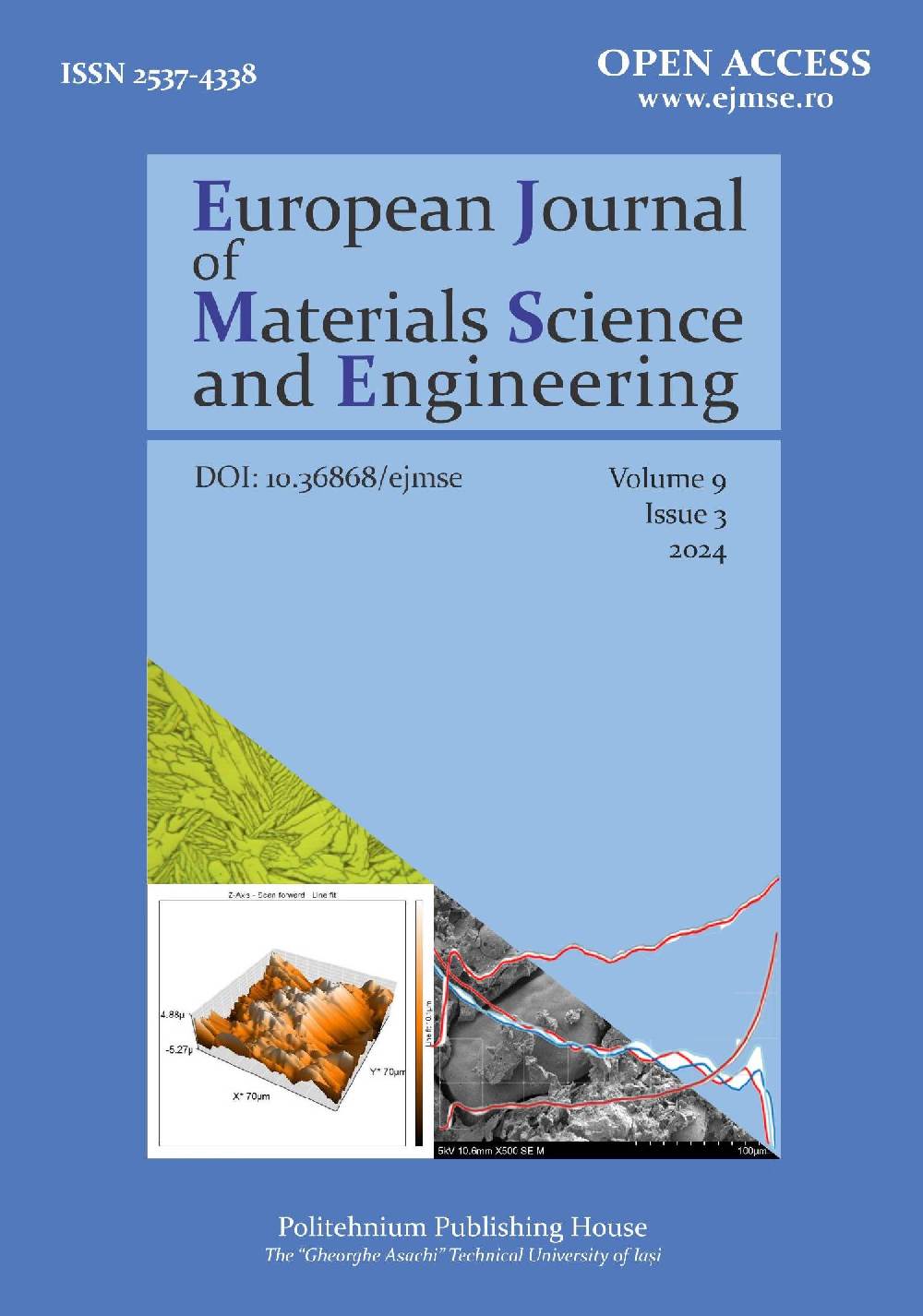IMPROVING THE CIRCULAR ECONOMY IN THE FOOTWEAR INDUSTRY
European Journal of Materials Science and Engineering, Volume 9, Issue 3, 2024
PDF Full Article, DOI: 10.36868/ejmse.2024.09.03.175, pp. 175-182
Published: September 20, 2024
Catarina S. ABREU1, Abílio P. SILVA1,*
1 Centre for Mechanical and Aerospace Science and Technologies (C-MAST), Universidade da Beira Interior, Rua Marquês d’Ávila e Bolama, 6201-001, Covilhã, Portugal
* Corresponding author: abilio@ubi.pt
Abstract
The article presents a circular economy proposal as a way to promote greater sustainability in the footwear industry. As part of the work, we analysed the essential components for a shoe and the materials used in the production of footwear. Currently, new proposals have emerged for footwear that use materials derived from waste and the forwarding of specific end-of-life products. These new concepts are associated with added value and targeted marketing towards sectors of society more concerned with the industry’s environmental impact. This reinforces the interest in the positioning of the footwear industry in relation to the circular economy. The purpose of this article focuses on the last phase of the circular economy – recycling, educating, and valuing the role of the consumer through the collection, treatment and forwarding of used footwear materials with the aim of reducing waste in landfills but simultaneously increasing awareness of the footwear industry.
Keywords: footwear industry, sustainable materials, life cycle, circular economy.
References:
[1] M. F. Ashby, Materials and the Environment: Eco-informed Material Choice, Butterworth-Heinemann, Oxford, UK, 1st Ed., 2009.
[2] H. Chae, S. Kim, J. Lee, K. Park, Impact of product characteristics of limited-edition shoes on perceived value, brand trust, and purchase intention; focused on the scarcity message frequency, Journal of Business Research, 120, 2020, pp.398–406.
[3] L. Cheah, N.D. Ciceri, E. Olivetti, S. Matsumura, D. Forterre, R. Roth, R. Kirchain, Manufacturing-focused emissions reductions in footwear production, Journal of Cleaner Production, 44, 2013, pp.18–29.
[4] J. Matos, Desenvolvimento de materiais têxteis com propriedades antimicrobianas para revestimento do calçado. Uminho.pt, 2014.
[5] Verney, https://verneystore.com (accessed on 23 January 2023).
[6] Re-coffe, https://www.facebook.com/recoffeeshoes/ (accessed on 25 January 2023)
[7] A. Costa, Re-Coffee: A marca portuguesa que faz sapatilhas com borra de café. [online] Evasões, 2021.
[8] Zeta, https://www.zeta-shoes.com/pt-pt (accessed on 23 January 2023).
[9] M. Rolo, Design de calçado do processo criativo à produção. Ipcb.pt, 2016.
[10] M.C. Antunes, Tecnologia têxtil– Agrupamento de escolas Alves Redol escola sede: Escola Secundária Alves redol. (n.d.).
[11] SENAI, Senai mix. design–Manual técnico têxtil e vestuário – No 01 – Fibras têxteis, 2015.
[12] APCOR. CORK – Information Bureau – Cortiça – Matéria-prima – Associação Portuguesa da Cortiça, 2019.
[13] CTCP. Novos Perfis de Calçado de Segurança Proteção e Ocupacional por CTCP – Centro Tecnológico do Calçado de Portugal, 2012.
[14] M.T. Júnior, C. Santos, Materiais e processo de produção de solados: destinação final de resíduos em empresas calçadistas no município de franca-sp. Revista Eletrônica “Diálogos Acadêmicos”, 12, 2017, pp.44–59.
[15] CTCP. Novos Materiais para Calçado Vegan e Calçado Biodegradável por CTCP – Centro Tecnológico do Calçado de Portugal, 2012.
[16] E. Santos, FEUP – Tese de mestrado integrado em engenharia química. Sigarra.up.pt, 2017.
[17] APICCAPS. Sustentabilidade no sector do calçado. APICCAPS, 2021.
[18] Zouri, https://www.zouri-shoes.com (accessed on 23 January 2023).
[19] As Portuguesas, https://asportuguesas.shoes (accessed on 23 January 2023).
[20] Ways, https://wayzforlife.com (accessed on 23 January 2023).
[21] Nae, https://www.nae-vegan.com (accessed on 23 January 2023).
[22] Balluta, https://balluta-shoes.com (accessed on 23 January 2023).
[23] Lemon Jelly, https://www.lemonjelly.com/pt (accessed on 23 January 2023).
[24] Tentoes, https://www.tentoes.pt/planet (accessed on 23 January 2023).
[25] Hirundo, https://hirundo.pt (accessed on 23 January 2023).
[26] M. Resnitzky, G. Grander, L. Silva, E. Gonzalez, Innovation projects of packaging recycling to a circular economy, Sustainable Operations and Computers, 2, 2021, pp.115–121.
[27] L. Llorente-González, X. Vence, How labour-intensive is the circular economy? A policy-orientated structural analysis of the repair, reuse and recycling activities in the European Union, Resources, Conservation and Recycling, 162, 2020, p.105033.
[28] J. Jacques. L. Guimarães Fim do ciclo de vida e projeto para desmontagem do produto calçado, Ufrgs.br., 2011.
[29] T. Pringle, M. Barwood, S. Rahimifard, The Challenges in Achieving a Circular Economy within Leather Recycling, Procedia CIRP, 48, 2016, pp. 544–549.
[30] M. Hofrichter, Análise SWOT: quando usar e como fazer. Simplíssimo, 2017.
